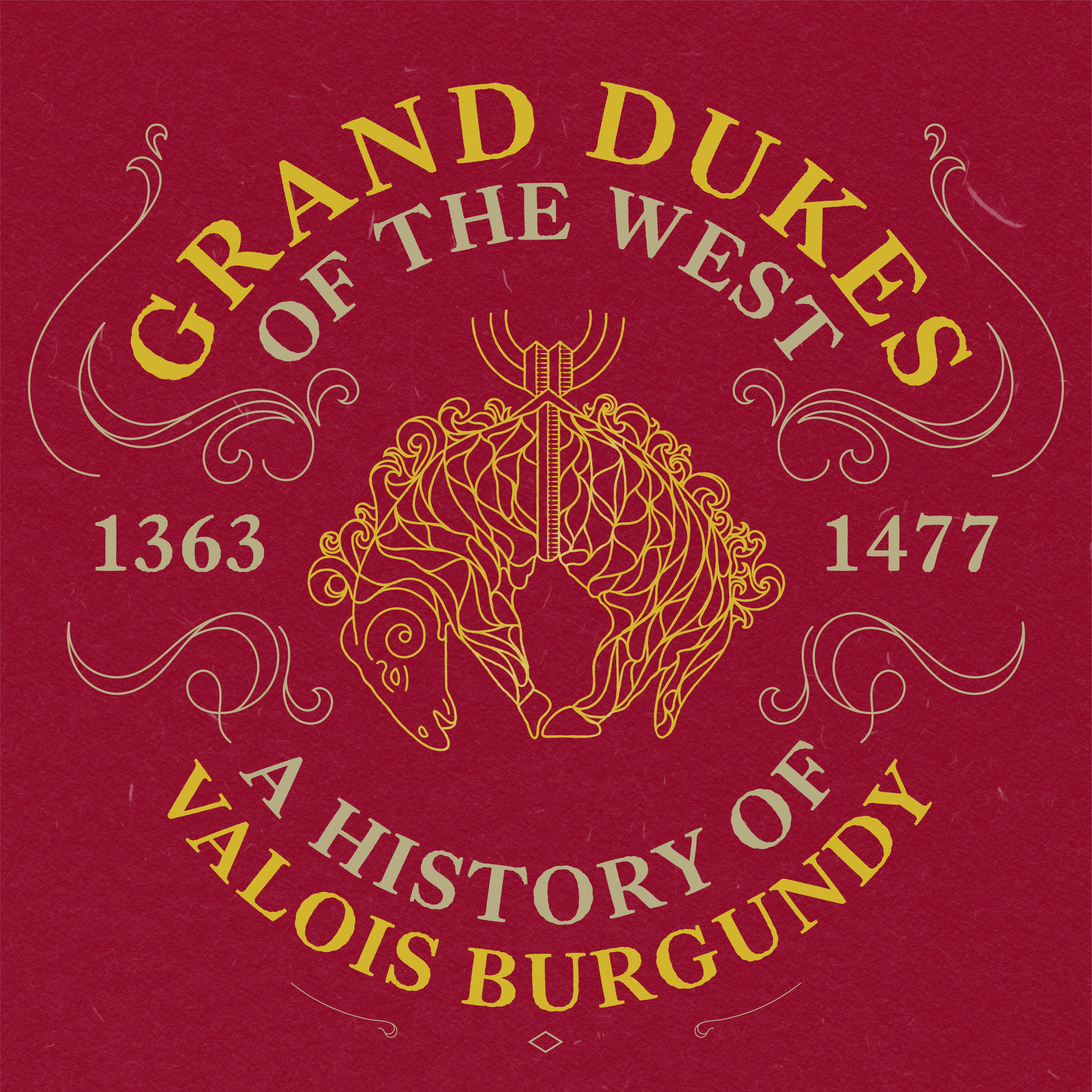
La Fayette, We Are Here!
La Fayette, We Are Here!
The 1830 Revolution. Barricades in Paris!
In July 1830, Paris erupted. For three days, workers, students, and veterans rose against royal ordinances that trampled the Charter of 1814. Barricades filled the streets, the tricolour flag flew once more, and the Bourbon monarchy collapsed. King Charles X fled, and Louis-Philippe, styled the “Citizen King”, took the throne.
This revolution wasn’t just a power shift; it was a powerful reminder that France’s revolutionary spirit was far from extinguished. From backroom politics to street battles, the July Revolution marked a turning point in modern French history.
Join us to revisit this pivotal moment.
Timecodes
Introduction
04:06 - A Broken Country
11:19 - A Step Too Far
19:52 - The Barricades
25:38 - King of the French
35:50 - Conclusion
To know more about the world behind the 1830 Revolution — the politics, the kings, the chaos — check out The Siècle, a phenomenal podcast on 19th-century France. Available on your podcast app of choice or at: https://thesiecle.com/
Relevant Episodes:
The French Revolution, a Worldwide Tremor
Napoléon Part II - From Paris to Saint Helena
Music: Marche pour la cérémonie des Turcs, composed by Jean-Baptiste Lully, arranged and performed by Jérôme Arfouche.
Artwork: La Liberté guidant le peuple. Eugène Delacroix, 1830. Musée du Louvre, Paris.
Reach out, support the show and give me feedback!
A young man arrives in Paris in 1880. He comes from a distant land, drawn by a desire to understand European culture and politics. He once heard the phrase, “When France sneezes, Europe catches a cold,” so he figured this was the best place to begin.
As he walks the Parisian streets, he discovers a city of striking architecture, brimming with life and undergoing rapid transformation. He’s fascinated by how a place so old can feel so alive, so eager to reinvent itself. He spends hours soaking in every detail on his very first day.
Eventually, he stops at a bookstore and decides to step inside. Books are everywhere, stacked on tables, spilling across carpets, piled high against the walls. Behind one of those piles, he spots an elderly gentleman. He approaches and, in broken French, asks: “Sir, I would like to know more about the revolution that took place here.”
The man smiles and replies, “Certainly. But tell me—which revolution?”
Surprised, the young man follows as the gentleman gestures toward a shelf of history books. He picks one up: The Barricades of 1830.
Let’s follow him in, and begin.
Welcome, to La Fayette we are here! The French history podcast, by a Frenchman! I am your host, Emmanuel Dubois and today, we are talking about the 1830 Revolution, aka the July Revolution, aka Les trois glorieuses or the three glorious. It is known by that name as it took place from July 27 to 29 1830. Those three days would redefine the French monarchy for the next 18 years, until another revolution takes place. The French do seem to have a thing for revolutions, don't they?
Before we begin, I encourage you to listen to my previous episodes on the French Revolution of 1789 and on Napoléon, to get some backstory here. The end of the eighteenth century and the nineteenth century are a very troubled, complex and fascinating period in French history. I will do my best to simplify it here to make everything digestible, as usual, but if you are interested in this period, I strongly recommend that you listen to the podcast The Siècle, by David Montgomery. He covers France's nineteenth's century history with great detail in a series of captivating episodes. I cannot recommend it enough. Go find it on thesiecle.com, spelled t-h-e-s-i-e-c-l-e.com or on your podcast app of choice.
For my part, I will first give you a comprehensible contextual presentation of France's political situation prior to the July 1830 events. Then we will dive into the direct causes of the July revolution, as well as its unfolding. Then, we will discuss the long term impacts of that tremendously important series of events. So, saddle up, and jump all the way back with me, to 1815.
A Broken Country
Following the Napoleonic Wars, France was a defeated, humiliated and broken country. In the immediate aftermath of the conflict, it was occupied by foreign troops and a pariah on the international scene. The Congress of Vienna had imposed the return of the Bourbons on the French throne. King Louis XVIII, brother of the late Louis XVI, became king of France for good in July 1815 and the country's political system was established under the Constitutional charter of 1814, a sort of compromise between old fashioned monarchy and revolutionary progress. Even the most conservative elements of European monarchies could not go back on all the aspects of the Revolutionary and Napoleonic periods. Even they had to recognize some major improvements that had been made, especially regarding the institutions and administration of the country. Furthermore, removing too many recently acquired liberties would certainly lead to another revolt, or even a civil war. Hence, king Louis XVIII had much less power than the previous kings, but France was not yet ruled by a true constitutional monarchy. It was more of a limited monarchy, as opposed to the absolute monarchy of kings Louis XIV, XV and XVI.
France had to rebuild and to reestablish trust with its European neighbours. No easy task after two decades of almost constant warfare. The country itself is divided into two major political groups. On the right, we have the ultras, short for ultraroyalistes who want to entrust the king with even more power and dream of a complete reversal of the Revolution. I'm exaggerating a little bit, but they basically want to go back in time and make it as if 1789 never happened. On the left, the liberals push for, well, more liberties and progress. Those two faction will almost never see eye to eye, and the king often had to find a way to make things work in his own government. To his credit, despite being perceived as an ineffectual relic, Louis XVIII always prevented the worst from happening during his reign. No major revolt broke out despite strong tensions.
The last few years of his reign proved difficult for Louis. Very much overweight, suffering from diabetes and gout, the French monarch was a caricature of a decadent king. In a country where many had trouble finding enough to eat, being obese was seen as a perversion. A textbook example of a king disconnected from his people, indulging in many vices. Though this is exaggerated, Louis' reputation in his latter years was certainly bad. Suffering from gangrene and literal rotting alive, he died on September 16 1824. Childless, he is succeeded as king by his brother, the count of Artois, now Charles X.
Charles doesn't know it yet, but he will be the last of the Bourbon kings. Although in much better health than his older brother, he is also a lot more conservative. Charles had always perceived the Revolution as an aberration and had always supported the ultras in their political endeavours. He came to the throne with a mission: to reestablish as much of the Ancient Regime values as he possibly could, starting by absolute monarchial power.
To make that clear to everybody, he is sacred king of France in 1825, something Louis XVIII had never done. He rekindled the strong link between the Catholic church and the French seat of power. That link was not broken, but it certainly had been weakened. Charles reversed that. A growing fringe of the population grew wary of the new king, seeing what he was doing. But for now, the French kingdom rolled with it.
Charles wanted to get rid of the 1814 Constitutional charter, a document he saw as an absurd limitation of his power, but he knew he couldn't do it overnight. He does maintain the ultraconservative Joseph de Villèle as president of the council, the head of government, and does his best to prevent the liberals from exercising any real political power. At the time, the French could vote for their government through legislative elections. But the system is rigged, only male Frenchmen with a certain level of incomes or personal wealth could vote, this is the census suffrage system. Hence, the vast majority of the population is excluded from the vote. All women and the vast majority of men. The ultras have no difficulty winning most of the seats each time. King Charles takes advantage of of that and works on strengthening his power year after year.
He is keen on punishing those who helped the Revolution or its reforms and to help those who suffered from them. He gives indemnities to the émigrés, these French nobles who fled France at the height of the Revolution in the 1790's. He disbands the national guard, created in 1789 and first commanded by our friend the Marquis de La Fayette. He establishes an Anti-Sacrilege Act, making blasphemy and sacrilege a crime, eventually punishable by death. All this in his first couple years on the throne. He even works on strengthening censorship and on limiting the liberty of the press. By 1827, the message is very clear, this king wants to go back in time and take his country with him. However, Charles had forgotten something very important. When you take your country with you, you have to take its people. And France, as you know, is full of French. With all that that implies.
A Step Too Far
Charles was not totally blind to the growing discontent within the population, especially the Parisian population. Parisians are notoriously anti-clerical, pro-liberties and superb troublemakers. You really don't want to get on their bad side. Following a strong showing of the liberals at the November 1827 elections, Charles appoints Jean-Baptiste Martignac, a moderate, as head of government, in January 1828. Martignac is actually friends with the Duke of Angoulême, Charles's son. His full name is Louis-Antoine d'Artois. More liberal than his father, d'Angoulême lobbied his father for this to happen. And at first, things did calm down.
Martignac, strengthened by the king's trust and d'Angoulême's support takes steps to stop the government's conservative aims. He abolishes press censorship and works to modernize the role of the king. Charles and d'Angoulême tour Eastern France in late summer 1828, in a sort of government's sponsored PR operation. It's actually a resounding success and Charles comes back to Paris in September happier than ever and certain that the whole of the country is behind him, no matter what.
However, poor Martignac didn't enjoy the same support. Being a moderate, he is under constant attack from the liberals, who deem him too conservative, and from the ultras, who deem him too liberal. Martignac cannot hold for very long and his government falls in August 1829. King Charles all too happy to replace him with Jules de Polignac, also knowns as the Prince de Polignac. He is the son of the duchess of Polignac, confidante and favourite of Queen Marie-Antoinette. As you can imagine, this man is very, very conservative. He supports a return to courtesan politics and privileges. Though only 48, his views felt like they belonged to another century. He is prudent, however, and doesn't do much in the first few months after his accession to the seat of power. But things change dramatically in March 1830.
King Charles is eager to reinforce his authority. In his speech opening Parliament, on March 2nd 1830, he threatens his critics and hints at "guilty manoeuvres" against the government. In response, a bold address read by Royer-Collard, the president of the Chamber of Deputies, accuses the king of being out of touch with the people, stating, “Sire, our loyalty obliges us to say: this harmony no longer exists.”
On March 18, a group of 221 deputies backs this address, outvoting 181 loyalists. Charles X retaliates by dissolving the Chamber and insisting on his sole right to appoint ministers. This sparks a growing liberal and republican opposition, with voices like the newspaper Le National, backed by liberal journalist and lawyer Adolphe Thiers, calling for a new dynasty under the House of Orléans. The "adresse des 221" or "statement of the 221" marks a turning point in French politics at this moment. The head of State and the Chamber are headed for a face-off. Things keep brooding, until July 1830.
That month, elections strengthen the opposition, 274 against are elected against 143 royalists. But the king doubles down. On July 26, he signs four reactionary ordinances or ordonnances: one, press freedom is restricted, two, elections are cancelled, three, the Chamber is dissolved again, and four, voting rights are limited to landowners, cutting out the business class and reinforcing traditional aristocracy, the last true pillar of support for the king. To legitimize these ordinances, the king invokes article 14 of the 1814 Charter, stating that the king can quote: "pass the necessary ordinances for the execution of the laws and the safety of the State", end quote. A textbook abuse of power by the executive branch of government.
The government accuses the press of inciting unrest, claiming it only wants to protect the state, not change it. Despite all this turmoil, Charles X is confident that his garrison of 12,000 men will protect the French capital. He leaves Paris to go hunting in Rambouillet that afternoon, a decision later mocked in biting caricatures. As I have stated before, the king forgets who he's dealing with. The French people and especially the Parisians have dealt with disconnected Bourbon kings and nobles before. Charles is wrong to underestimate their resolve, acumen and intelligence.
The press immediately calls to protest the ordinances and describes the dissolution of the Chamber as illegal, but they do not attack the person of the king directly, not yet anyway. A judge in the Seine department tries to block the ordinances regarding the press and the electoral system, stating that the king can't interfere with them. The next day, Tuesday July 27th, thousands of workers do not show up for work. Factories are shut down. Police forces are sent to newspapers to destroy printing presses being used despite the prohibition set in place the day before. This is the last straw. Destroying the presses is the ultimate symbol of a repressive monarch. Workers take it to the streets, followed by hundreds of Parisians. Polignac is confident he can maintain order, but the French people are already chanting: "Long live the Charter! Down with the ordinances! Down with the ministers!"
First came the students, young republicans, idealists, around 3,000 to 4,000 of them. Among them were polytechnic cadets and veterans of lost causes, led by names like Godefroy Cavaignac and François-Vincent Raspail. They didn’t rise alone. Former soldiers of Napoleon’s Empire reappeared to lead nearly 50,000 insurgents, workers, artisans, and members of the disbanded National Guard. They marched beneath the tricolour flag, the symbol of revolution. Soon, it would replace the white flag of the monarchy, yet again.
And then, another royal blunder. Charles X appointed Marshal Marmont, Duke of Ragusa, to command the army in Paris. To the people, Marmont was a traitor. In 1814, he had switched sides and abandoned Napoleon. His name had become slang for betrayal. To “raguse” was to turn your back on France.
Worse still, Marmont had almost no artillery. No food. No ammunition. But he still believed he could restore order. That night, he reported to the king that the situation was under control. He was wrong.
The Barricades
Alerted by the events, the king consults Polignac. He favours a firm approach, believing that conciliation would be a sign of weakness. The king, for his part, remembers his brother Louis XVI. Charles has always believed that if Louis had been more resolute at the very beginning of the Revolution in 1789, it would have been crushed and nothing would have come of it. He therefore decides to side with Polignac. He will not yield. The ordinances will stand, and Marmont will have to fire on the population if necessary. The king and Polignac are certain that the uprising will be suppressed by the next day.
By dawn on July 28, central and eastern Paris had turned into a battlefield. Barricades rose across working-class districts. Trees were cut down, streetlamps smashed, paving stones dug up from the ground. And now, the first bodies lay in the streets. The stakes had changed. It was no longer a protest. It was a revolution.
The insurgents seized the Arsenal, then the Salpêtrière powder depot. Marmont tried to reclaim the Hôtel de Ville, but his troops, exhausted and pelted from rooftops and windows, were forced to fall back toward the Louvre. The tricolour was now flying not only over the city hall, but also above Notre-Dame.
At the same time, a group of liberal politicians met secretly at the home of deputy François Guizot: Thiers, Mignet, Périer, de Broglie, Cousin, Rémusat. There was tension in the room. Some wanted to take the lead in the uprising, others feared stepping outside the bounds of law. They tried to meet with Polignac, the king’s hated minister, but he refused to see them.
Meanwhile, Paris was tearing itself apart. That night, a printed notice appeared on the walls: a republican triumvirate was forming. The monarchy, it seemed, was collapsing in real time.
On July 29, the people stormed a military barracks on Rue de Babylone. Then came the ultimate prize, the Louvre and the Tuileries Palace. Marmont gave the order to evacuate the capital. He retreated through the Arc de Triomphe, heading for Saint-Cloud, where the king awaited news.
In Paris, the Chamber of Deputies moved quickly. A municipal commission was formed. And in a powerful moment of symbolism, La Fayette, hero of two revolutions, and now 73 years old, took command of the reformed National Guard.
The goal was clear, restore order before chaos consumed everything. Even Guizot, who feared the mob, admitted they needed a new government to prevent a descent into anarchy.
The king, under pressure, withdrew the ordinances. He dismissed Polignac. But it was too late. His attempt to install a new government under the Duke of Mortemart failed.
By July 30, the fighting was over, but the damage was done. The revolution had cost 150 royal soldiers their lives. Over 700 Parisians were dead, and more than 2,000 wounded.
The question now was: what next?
Two paths emerged. One group rallied behind the Duke of Orléans, hoping to establish a constitutional monarchy. The other wanted a full republic, and they looked to La Fayette to lead them.
Charles X had fled to England, leaving a power vacuum in his wake. Into that void stepped Adolphe Thiers, who drafted a proclamation that spread swiftly across Paris. It named Louis-Philippe, Duke of Orléans, as the new ruler, the “Citizen King.”
Thiers crafted a careful image, a prince who had fought alongside revolutionary troops at Jemmapes in 1792, who had kept his distance from the Bourbon court during the Restoration, and who now vowed to rule in the name of the people, not by divine right. The Chamber of Deputies formally declared Charles X deposed. On July 31, they offered Louis-Philippe the Lieutenancy of the Kingdom. That same morning, he accepted. A proclamation rang out: “The Charter shall now be a truth.”
Then, La Fayette stood on the balcony of the Hôtel de Ville, flanked by Louis-Philippe. Above them, the tricolour flag, the emblem of the Revolution, waved once again over Paris. These men, having found their new order, now had to make it work.
King of the French
With La Fayette supporting the constitutional monarchy, the idea of another republic was all but dead. At its core, the July Revolution was never just about the barricades or the storming of Paris. It was, fundamentally, a fight to reclaim the Charter of 1814, a promise of rights and representation, that had been trampled under royal authority. But as the days wore on and the smoke cleared, it became something even larger. It became a battle for the very soul of France in the wake of revolution.
And this struggle wasn’t confined to the capital. From the northern fields of Normandy to Alsace and Lorraine, even deep into the royalist strongholds of the South, people stirred. Local commissions were proclaimed. Town halls changed hands. The tricolour flew once more, not just over Paris, but across the country. The spirit of 1789 had been rekindled, not by decree, but by action.
Then, on August 2nd, Charles X abdicated. It was too late. His gesture, naming his young grandson, the Duke of Bordeaux, as heir and designating Louis-Philippe as regent, was an attempt to control the transition. But the tide had already turned. France was no longer waiting for royal instructions.
The royalist camp itself fractured. On one side stood the Legitimists, clinging to the old Bourbon line and its divine claim to rule. On the other stood the Orléanists, pragmatic and ready to embrace a new order shaped by the will of the people. On August 3rd, Parliament gathered to begin rewriting the very foundation of governance. On August 6th, they struck down the old preamble of the Charter, the one that had declared it a gift from the king. In its place, a new principle took root, power did not descend from the throne, it rose from the people.
And then, on August 7th, the chamber declared Louis-Philippe as King. But not "King of France", that title belonged to the old regime. He was proclaimed "King of the French", a monarch not by divine right, but by national consent. Two days later, he stood before the Chambers and took his oath. There was no grand coronation, no return to royal pageantry. No fleur-de-lis, no white flag. Only the tricolour, waving above him, and a solemn promise to uphold the new Charter.
Thus, a new monarchy was born, not absolutist, not revolutionary, but something in between. A monarchy tempered by liberalism, rooted in compromise. The July Revolution ended not with the roar of a guillotine, but with a calculated pause, with a handshake between popular will and political strategy.
But who was this new king, Louis-Philippe I, who had emerged not from royal pageantry, but from the ashes of revolution?
Unlike his predecessors, Louis-Philippe had deep ties to the reformist ideas of 1789. Back in 1790, he was a member of the Jacobin Club and served in the National Guard. He fought not against the Republic, but for it, on the frontlines of Valmy, Jemappes, and Neerwinden, battles that would shape the future of France and Europe.
Exile had taken him far, from revolutionary France to the young United States, and later to England. There, he saw the strength of parliamentary government, the possibility of a monarchy constrained and defined by law. He returned to France with liberal ideas, and surrounded himself with like-minded thinkers and advisors.
So when the Chamber of Deputies gave him its confidence, 219 votes to 252, Louis-Philippe stepped into power with a cautious but clear programme, to lead a constitutional monarchy born of compromise, not conquest. The republicans distrusted him. The Legitimists despised him. Yet, in this fragile middle ground, the July Monarchy began.
He opened his reign with a measured liberalism. But by 1832, a shift began. Fearful of unsettling the business elite, who eyed the growing popular unrest with unease, Louis-Philippe began to draw back. The promise of reform gave way to caution. The king, it seemed, governed not just for the people, but for the “legal country”, the property-owning class whose wealth granted them the right to vote.
This tension, between the expanding aspirations of the middle and working classes, and the entrenched interests of the elite, would come to define the July Monarchy. The electoral system froze out much of the population. Discontent simmered. And over time, the cracks widened.
Louis-Philippe himself struggled with the limits of constitutional rule. He chafed against the principle beloved by the liberal statesman Adolphe Thiers, “The king reigns, but does not govern.” For all his revolutionary roots, the King of the French grew increasingly uncomfortable with the very regime that had lifted him to power.
In many ways, Louis-Philippe became a symbol of his age, a monarch caught in the transition between the fading light of absolutism and the untested dawn of liberal democracy. It was a period of contradiction, in politics, in society, in the arts, and in the emerging power of industrial capitalism. Romanticism soared in painting and literature, while steam and iron began to reshape the land.
And so the king walked a careful line. On the diplomatic stage, he reassured his fellow monarchs, many of them absolute rulers, that France had not strayed too far. He curbed the excesses of the left and distanced himself from yesterday’s republican allies. Yet, he also maintained ties with England, France’s old foe, and cautiously supported the aspirations of Belgians, Poles, and Italian patriots.
At the same time, French imperial ambition grew. The conquest of Algeria gained momentum. France seized control of Nossi-Bé and Mayotte in 1841 and 1843, and established protectorates across the Pacific, in Tahiti, the Marquesas, Wallis, Gambier, and the Tuamotu islands. The July Monarchy, for all its internal caution, did not shrink from overseas expansion.
At home, a new era was taking shape. Family workshops and artisanal trades gave way to mechanized industry. Machines ran on coal, and production soared, from 2 billion francs at the end of the Empire to 4 billion under Louis-Philippe. Railways stretched across the landscape, connecting cities and fuelling commerce. Roads, canals, and ports were modernized. Bankers and financiers became key architects of progress. Textile production boomed with the introduction of mechanized looms. A new forest code regulated lumber use. In agriculture, livestock breeding improved, and sugar beet cultivation exploded, growing from 6,000 tonnes in 1830 to 38,000 just five years later. Silkworm farming, even that, flourished in the Rhône Valley and Ardèche. Agricultural education followed suit, with new model farm-schools like Roville, Grignon, and Grand-Jouan opening across the country.
In short, France was preparing to take its place among the great industrial powers of 19th-century Europe, just as England had done. And yet, beneath the surface, the old tensions remained. The king tried to appease the absolutist courts abroad while keeping liberalism in check at home. But history would not wait.
By February 1848, the pressure would explode. Discontent turned to protest. Protest turned to riot. And just like that, the July Monarchy would fall, brought down not by foreign invasion or royal intrigue, but by the growing voice of a people still striving to define their own destiny. But this, my friends, is a story for another day, and another episode.
Conclusion
If 1789 shook the whole world, 1830 confirmed that the Revolution was unfinished business. One could think that after a civil war and two decades of almost constant warfare, the French would be done with all this fighting. Well, one would be wrong. Despite all the pain, the death, the uncertainty, the people of France would always rise when political power became too authoritarian or repressive.
King Charles X thought his position gave him enough strength and credibility to turn back the clock. He wanted to make the Revolution an accident of history, merely an event to be noted in history books. He completely failed to understand what had brought the Revolution about in the first place, and also its consequences. There was no going back to 1789. There was no going back to an absolute monarchy. He was ruling on borrowed time, bought by the Allied victory of 1815 and the Congress of Vienna. The Bourbons had been imposed on the French by their victors. The will of the people was ignored in 1815, but France was on its knees back then. Following two decades of war, hundreds of thousands of deaths, and unimaginable devastation, the country was in no position to resist.
By 1830, the situation had changed. Charles and his inner circle were caught completely off guard, blinded by their stubborn, backward-looking views. The French people found support in the liberal elite, with people like Adolphe Thiers or our old friend, the Marquis de la Fayette. These thinkers and men of action stirred the country in the way of a modern constitutional monarchy, even though it would prove to be a flawed system too. During the rest of the century, France would experience three more regime changes, settling on a Republic for good in 1871 after a disastrous military defeat against Bismarck's Prussia. Albeit quite different now, France has never ceased being a republic since then.
The story of King Charles is one of overconfidence, stubbornness, and a tragic misreading of his times. He believed that authority could be reclaimed by decree, that a crown once restored was secure by default. But the French people had lived through revolution and empire. They had known both tyranny and liberty, and they had developed a sharp instinct for recognizing when power was overreaching its bounds.
Charles X paid the price for ignoring that instinct. His downfall was not just the end of a king, it was the collapse of an illusion, the belief that France could be governed as if the Revolution had never happened.
And so, in July 1830, the tricolour flew once more, not just over Paris, but across a nation that had tasted the idea that power belongs to the people. The Revolution had not ended in 1799, or in 1815. It simply paused, changed form, waited. And when the time came, it reminded the world that in France, legitimacy must always answer to liberty.
The July Revolution was no final chapter. But it was a turning point, a vivid reminder that history never truly turns back, no matter how badly some might wish it would.
Podcasts we love
Check out these other fine podcasts recommended by us, not an algorithm.

Generals and Napoleon
John W. Viscardo
Shipwrecks and Sea Dogs
Rich Napolitano
French Revolution & Napoleon (Grey History)
Grey History (William Clark)
The Life and Times of Frederick the Great
Alec Avdakov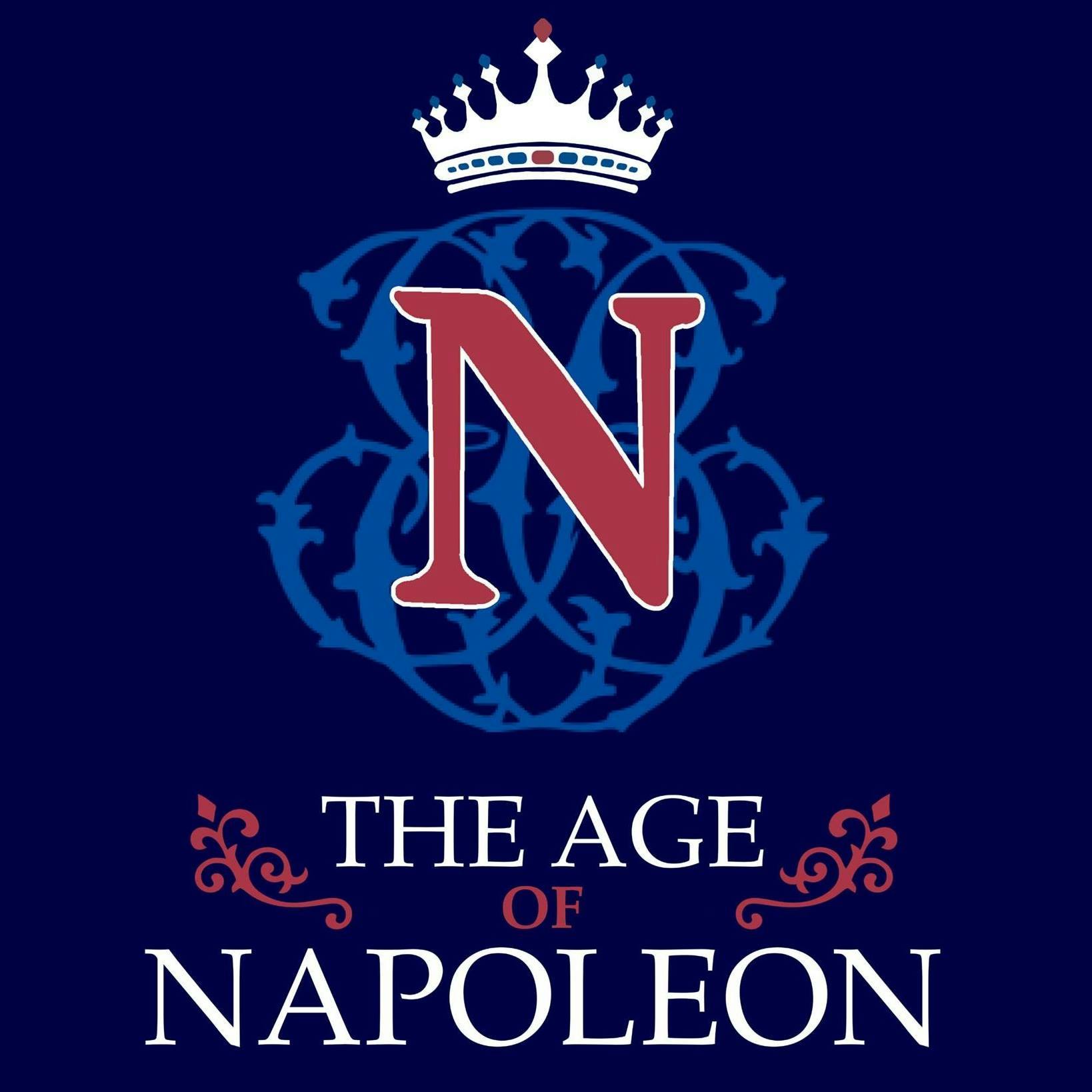
The Age of Napoleon Podcast
Everett Rummage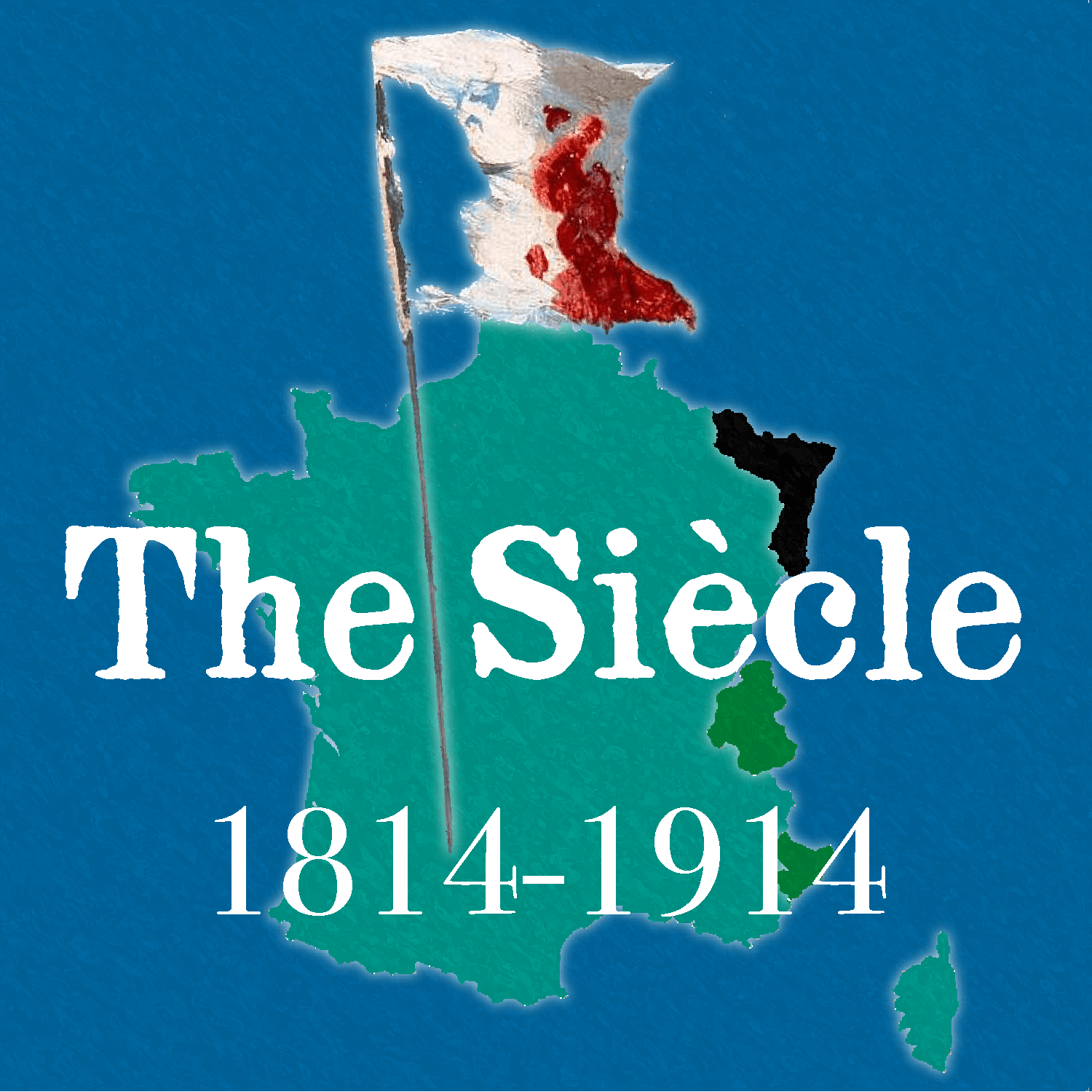
The Siècle History Podcast
Evergreen Podcasts
The Napoleonic Wars Podcast
Zack White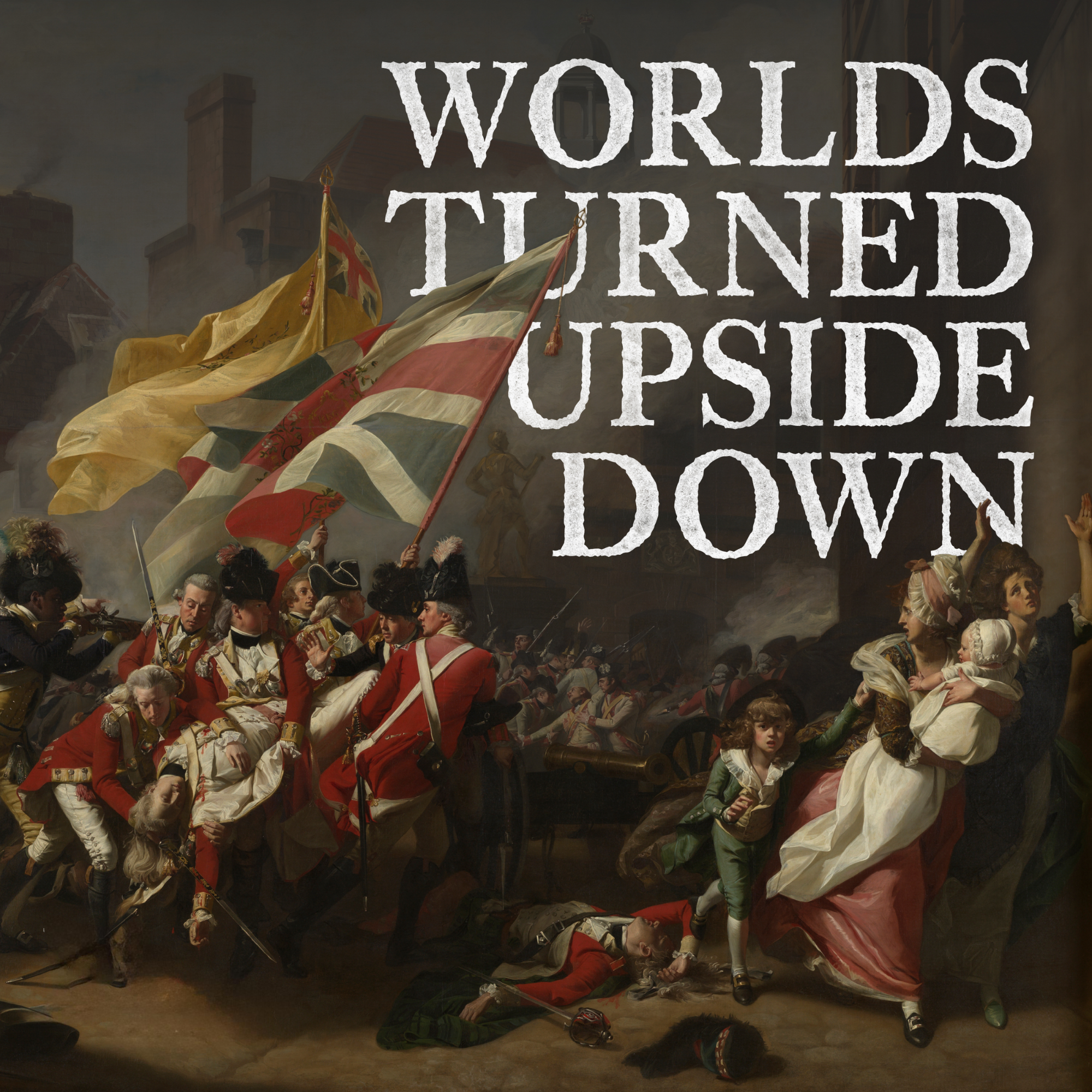
Worlds Turned Upside Down
Roy Rosenzweig Center for History and New Media
Empire-Builders
David Mainayar
Battles of the First World War Podcast
Mike Cunha
New York, Quebec, and The Water Route to the Center of the World
William Matthews
Deep into History
Deep into History
Battle Royale: French Monarchs
Ben Clarke and Eliza Sommers
A History of Japan
Justin Hebert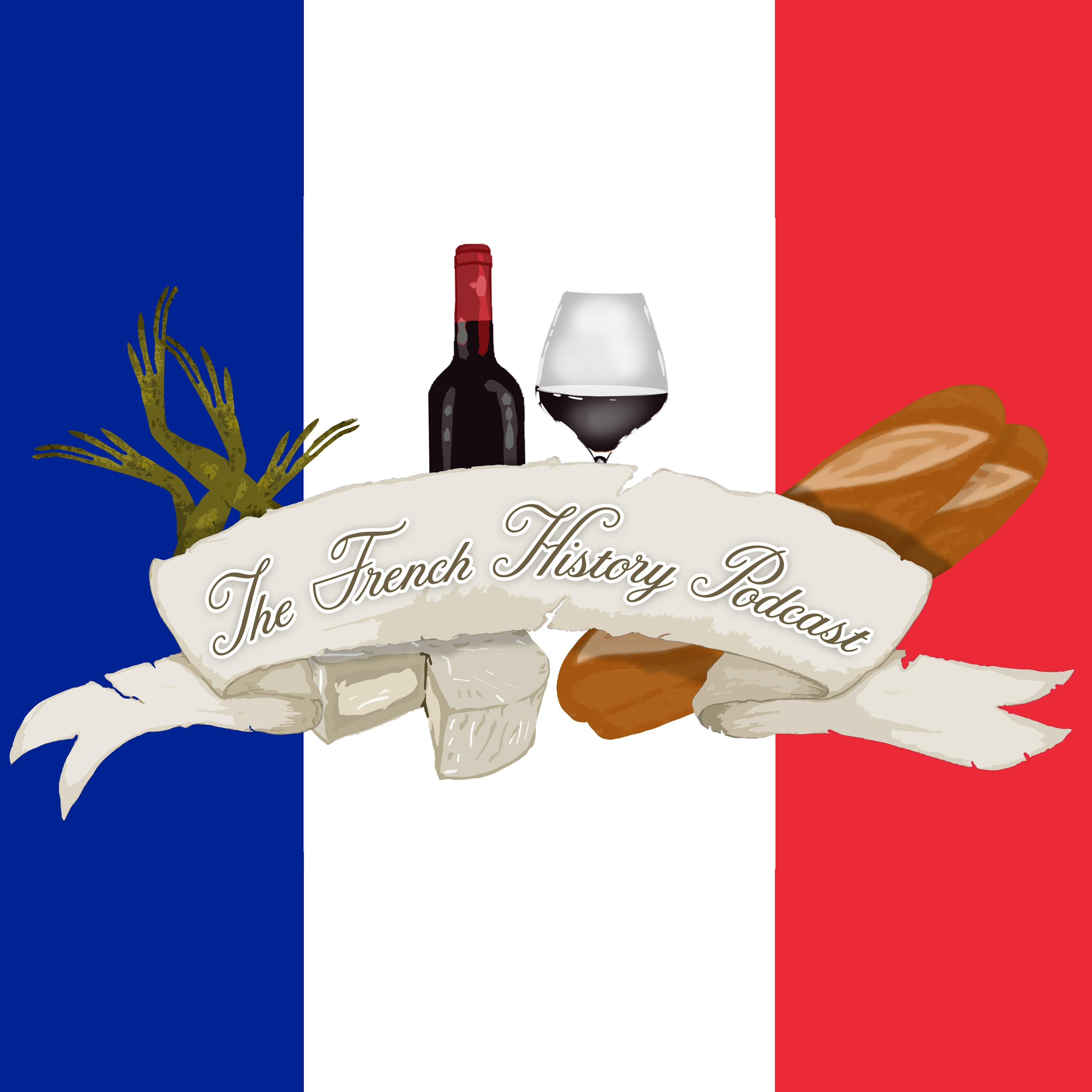
The French History Podcast
Evergreen Podcasts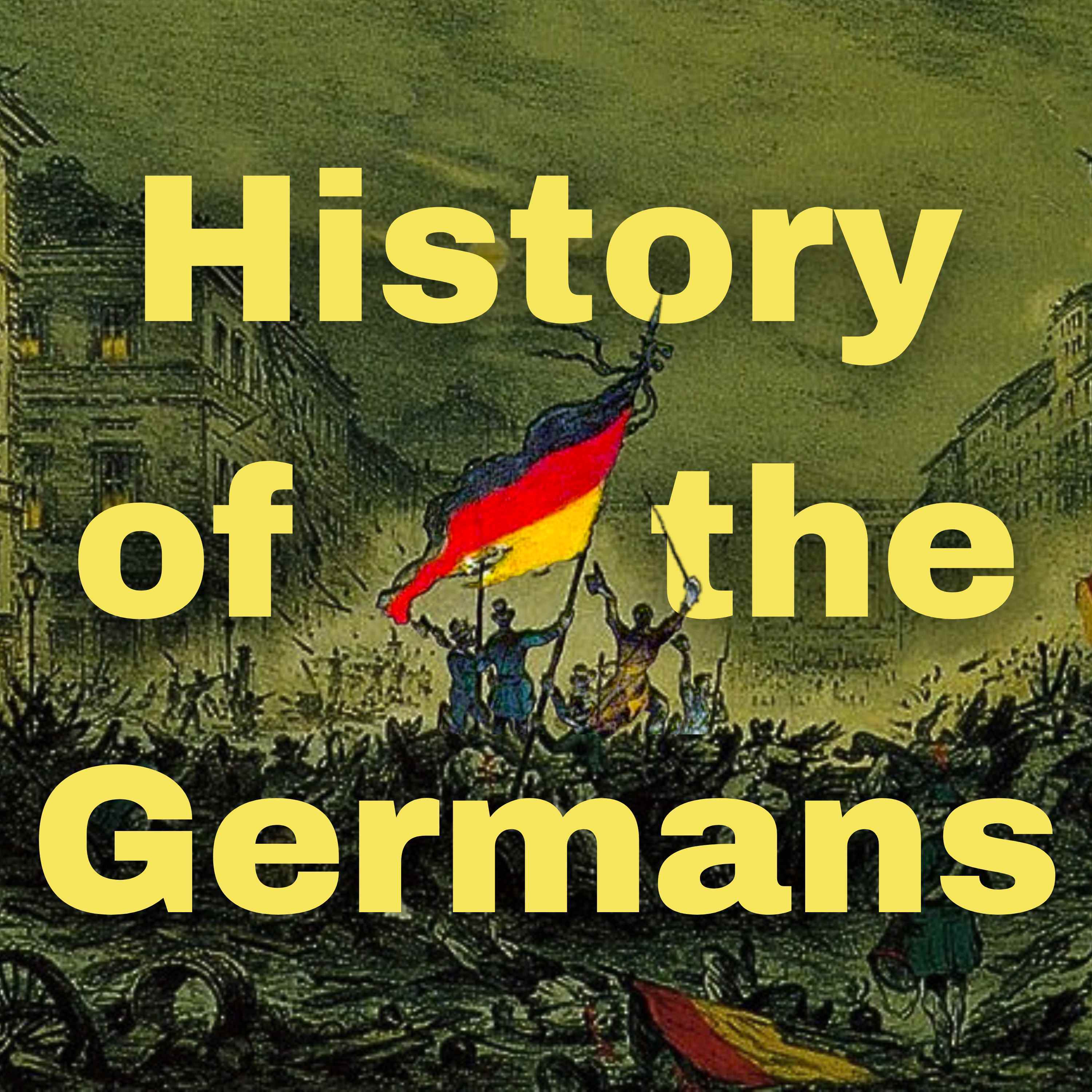
History of the Germans
Dirk Hoffmann-Becking
Half-Arsed History
Riley KnightFrench-Canadian Legacy Podcast
French-Canadian Legacy Podcast
The History of England
David Crowther
Canadian History Ehx
Craig Baird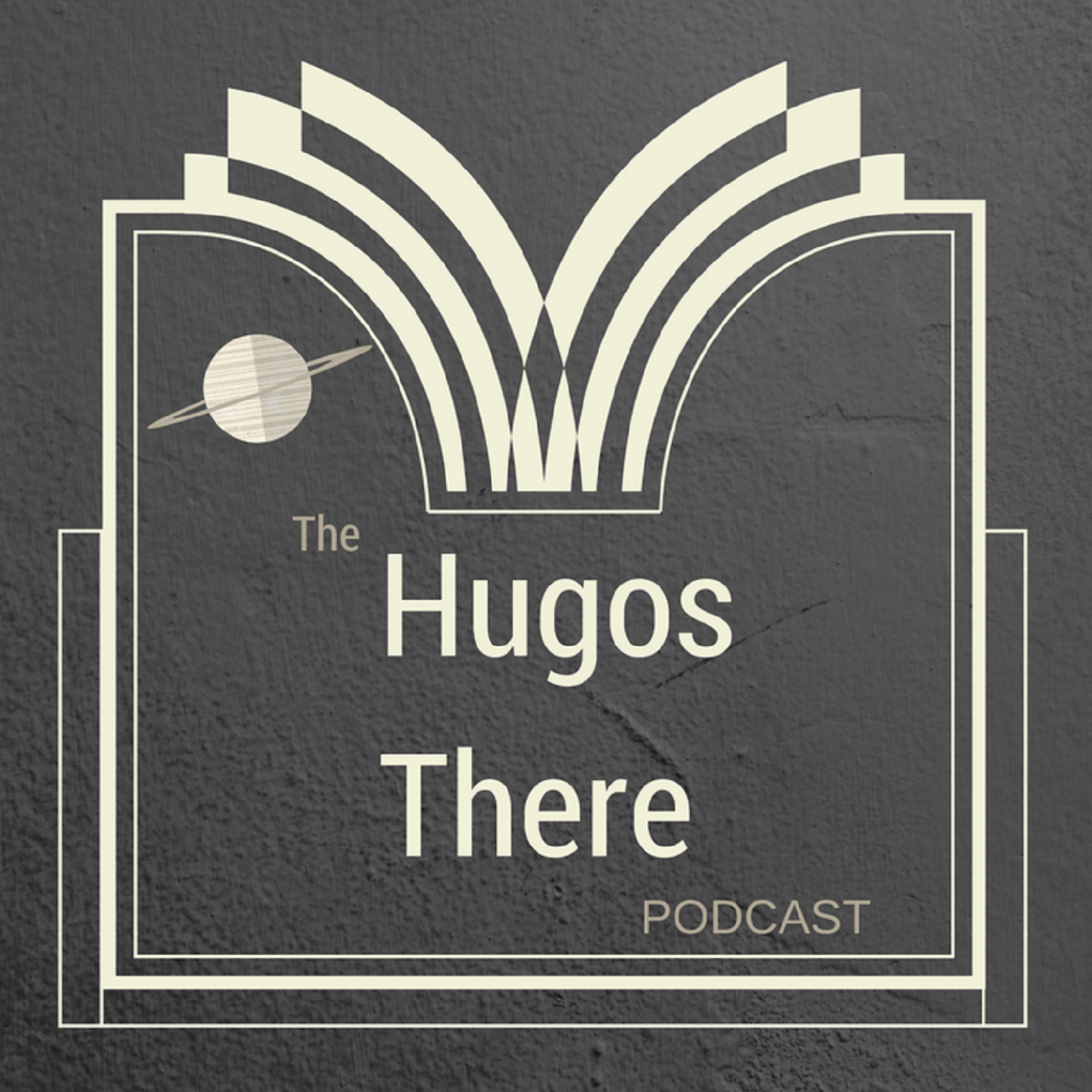
Hugos There Podcast
Hugos There Podcast
Hugo, Girl!
Hugo Girl

